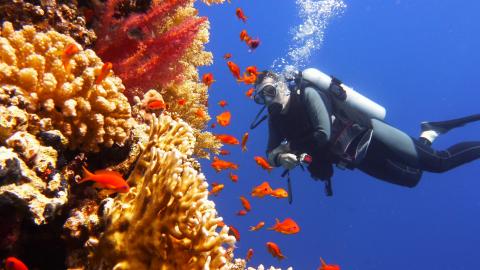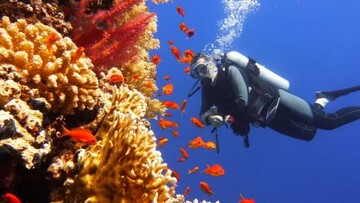Draper Partners with NOAA on Coral Restoration Pilot Program in the Florida Keys
CAMBRIDGE, MA—Disease, climate change and environmental stresses have turned coral reefs into one of the most threatened marine systems on Earth. Now an innovative project is underway in the Florida Keys to develop reef rebuilding and replenishing systems. Key to its success is a new method for outplanting coral—the practice of transporting and securing nursery-reared corals to reefs.
Draper in partnership with the National Oceanic and Atmospheric Administration (NOAA) has begun a pilot program for the Florida Keys to increase the speed of outplanting. Divers will handle the delicate work of planting new coral on existing reefs. Draper engineers are developing a new method that is both safe for the coral and speeds up the process for the diver.
Outplanting corals into degraded areas is a common active restoration approach aimed at increasing coral cover and structural complexity. The most common attachment methods are two-part epoxy, nail and cable tie, cement and nails with nylon cable ties or coated wires.
But outplanting also can be the most expensive and labor intensive part of coral restoration efforts due to long hours and many people needed using scuba gear and boats. Planting a single coral takes three to six minutes for a skilled diver. Draper is identifying and testing an adhesive solution that could potentially cut that time in half. The long-term goal is to increase the outplanting rates by a factor of three to five times.
Tom Moore, Coral Reef Restoration Program Manager at NOAA, points out that “while it may seem like a simple issue, finding a more effective adhesive has the potential to result in a three times efficiency increase for coral outplanting overnight. While there are other challenges to scaling up, this one will have the most immediate effect.”
Marine environments pose special challenges for outplanting coral because the environment is particularly inhospitable for adhesives, says Isaac Moran, Ph.D., a polymer scientist at Draper.
“From a material scientist standpoint, the biggest challenges involve achieving sufficient, instantaneous chemical bonding, or tack, in that environment and retaining mechanical integrity during the time the coral is anchored, which can be over one year. Current methods that rely on epoxies are insufficient to that challenge,” Moran said.
The marine adhesive project is part of an initiative called Global Challenges that applies Draper’s engineering and technology expertise to challenges for humankind and the planet. Other projects include a sensor for measuring the amount of microplastics in the oceans, a pediatric heart valve for infants, maternal ultrasound solutions for ultra-low resource environments and mobility tools for congested urban environments.
Global Challenges projects are all undertaken with partners who bring invaluable field experience, and are enabled by individuals, foundations, and philanthropists who share Draper’s commitment to positively impacting the future. Draper’s Global Challenges office is under contract to Sea Ventures Inc. in support of NOAA’s Restoration Center.
Released September 17, 2019

